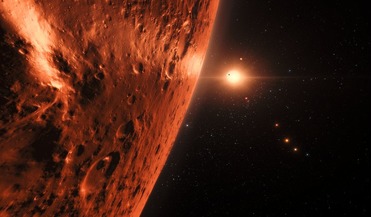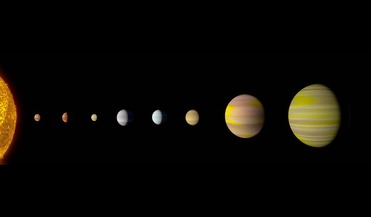 23 September 2025
Amazing Worlds of Science Fiction and Science Fact
23 September 2025
Amazing Worlds of Science Fiction and Science Fact
... this book extends the link to the growing field of exoplanet discovery. In it, the author compares some fictional planets in...our current scientific understanding” to reveal that “the real exoplanets… are truly stranger than fiction”. The book’s ten ...
 04 January 2016
Researchers find a new way to calculate the pull of gravity at the surface of a star
04 January 2016
Researchers find a new way to calculate the pull of gravity at the surface of a star
... of the University of British Columbia and one of the co-authors of a paper recently submitted to Science Advances. "The size of an exoplanet is measured relative to the size of its parent star. If you find a planet around a star that you think...
 03 January 2017
What did 2016 do for us?
03 January 2017
What did 2016 do for us?
... in the fabric of spacetime first predicted by Albert Einstein over a century ago. Scientists also discovered the nearest exoplanet to us orbiting our nearest star, Proxima B, speculating that it might be a water-world similar to our own, ESO sent...
 01 September 2017
TRAPPIST-1 planets could contain substantial amounts of water
01 September 2017
TRAPPIST-1 planets could contain substantial amounts of water
... atmosphere, where ultraviolet sunlight breaks molecules apart, ultraviolet starlight can break water vapour in the atmospheres of exoplanets into hydrogen and oxygen.” This happens when photons of a certain energy break the bonds of molecules into...
 14 December 2017
AI detects eighth planet orbiting distant sun
14 December 2017
AI detects eighth planet orbiting distant sun
Scientists using a neural network to search through the enormous Kepler dataset have found an eighth planet in a distant exoplanet solar system known as Kepler 90. This is the first system other than our own that has been ...
 23 April 2018
CubeSats lead the way for new NASA missions
23 April 2018
CubeSats lead the way for new NASA missions
..., and works similar to TESS by allowing researchers to monitor the brief drop in brightness of nearby stars, when a transiting exoplanet blocks out the starlight as it passes in front of its host star. The mission objective was to test whether...